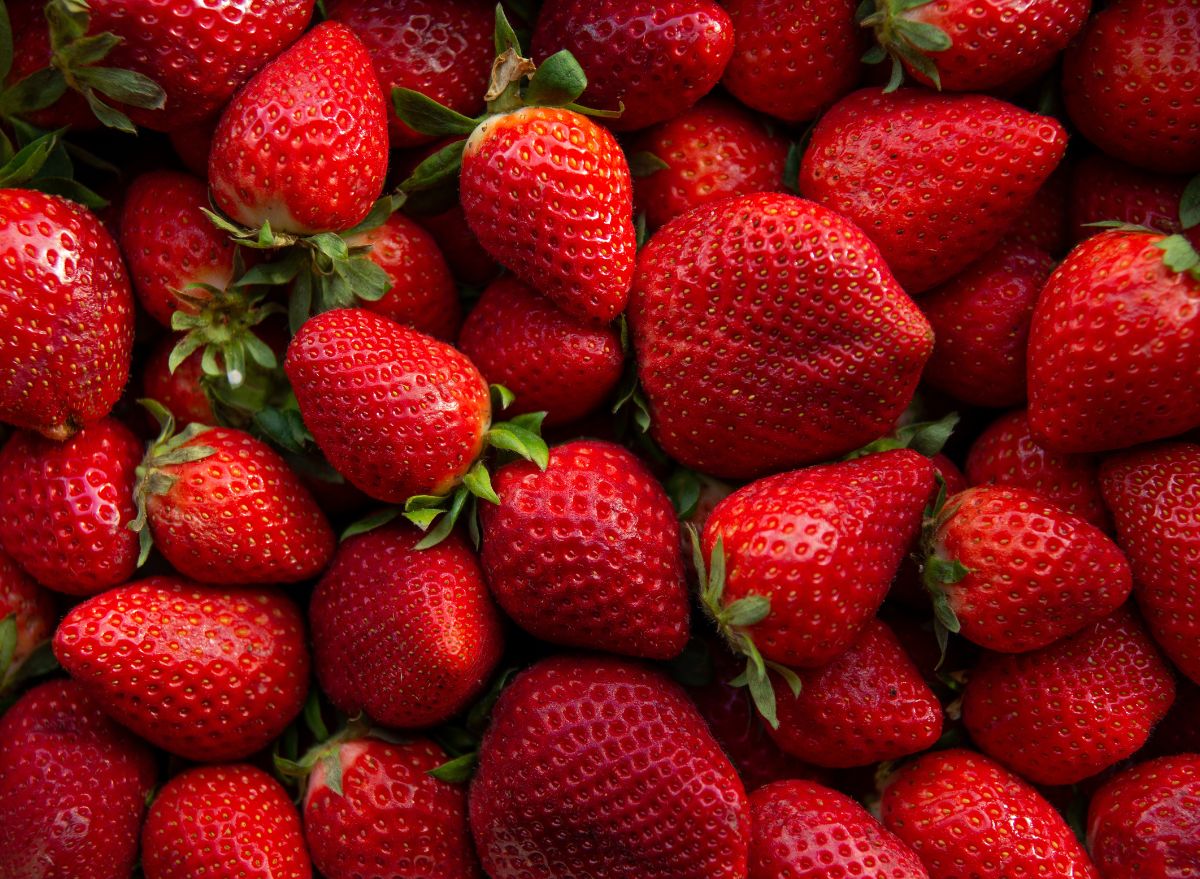Strawberries, Tomatoes & Other Produce Could Soon Get More Expensive, Analyst Predicts

Eggs, butter, ham: all of these grocery staples have been making headlines over the past year for their soaring prices, and Americans have only started to see some relief on their grocery bills in the past few months.
Consumers should know, however, that the days of elevated food costs are not yet completely behind them. Several common grocery items, including strawberries and tomatoes, could soon jump in price again as other prices come down—and it's all because of a recent spate of wild weather in the Golden State.
After seeing the three driest years on record, California just experienced an uncommonly wet winter as snow and rain pummeled the state for months, The Los Angeles Times reported. This wet season has actually benefitted California in a couple of ways, including easing the state's severe drought conditions and reportedly causing a massive bloom of wildflowers.
On the flip side, this weather has been detrimental to growing conditions for several important crops, according to Brad Rubin, Wells Fargo's food and agribusiness industry advisory group sector analyst. California's Salinas Valley and Central Valley, two major crop producers, have both seen flooding over this wet winter that has negatively impacted their agricultural production. This means that supplies of crops like strawberries, tomatoes, and leafy greens will be tighter, and prices will likely increase as a result.
"You're going to have strong demand and pricing is going to go up as a result of that," Rubin says.
These issues seem even more daunting when you consider just how large of a role California plays in crop production. The Salinas Valley, also nicknamed the "Salad Bowl of the World," reportedly produces roughly 70% of the world's lettuce. California produces more than 90% of America's processed tomatoes–used in grocery store staples like ketchup, pasta sauce, and canned tomatoes–and about a third of the world's supply, per The Washington Post. The state is also the largest producer of strawberries in the United States.
Just how much prices for these items may increase remains to be seen, but Rubin expects that Americans will start to see the effects in the very near term.
"The majority of some of the impact could take place in the next one to three months, but the hope is that prices then stabilize and kind of come back down as demand is fulfilled," Rubin says.
While any price jumps will hopefully be short-lived, consumers may have to temporarily make their peace with paying extra for their salads and strawberries, or explore other ways to get their daily servings of fruits and veggies.
This isn't the only recent instance of skyrocketing grocery costs that can be traced back to the weather. Price-wary shoppers should also keep an eye out for a potential surge in olive oil prices due to a record-breaking heatwave last year that impacted Europe's predominant olive-growing regions.









